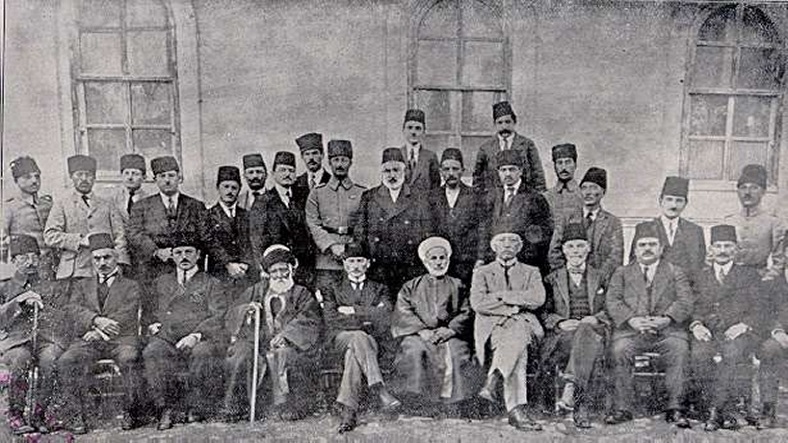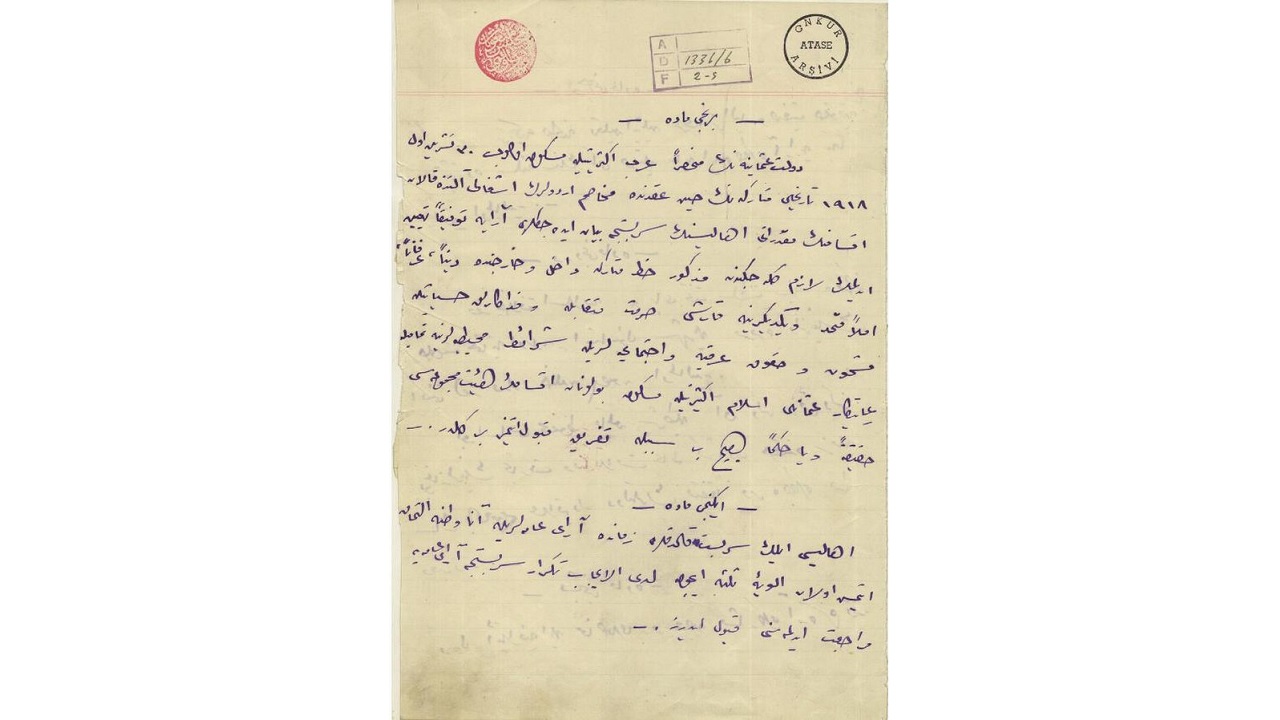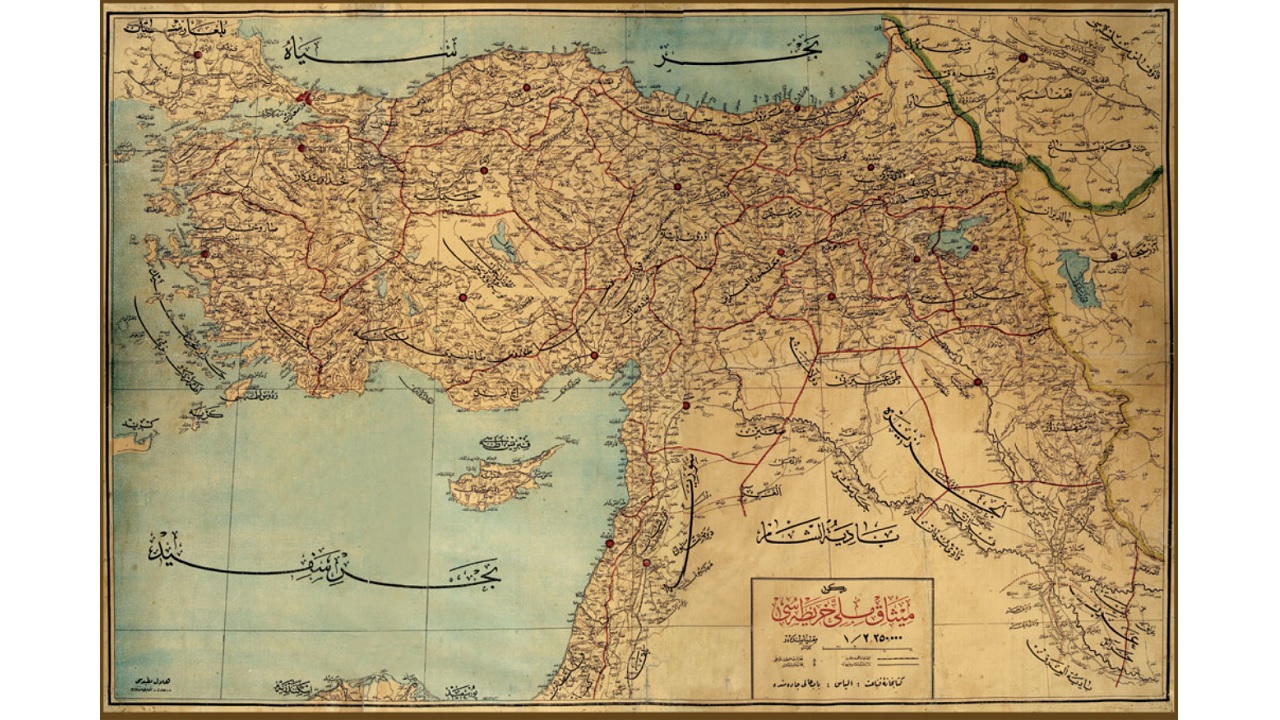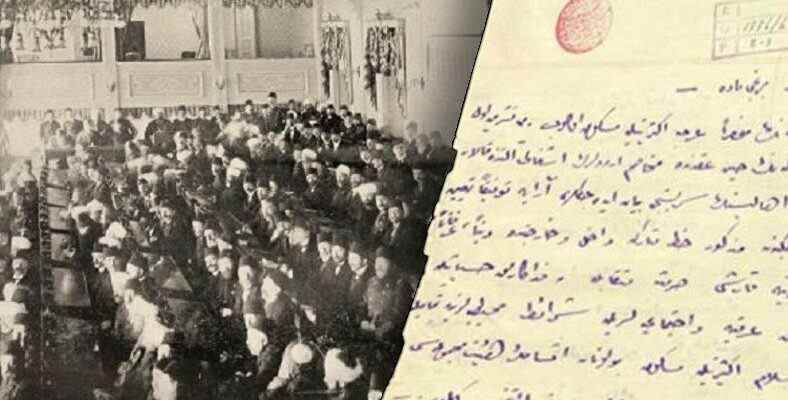The National Pact, accepted as the political manifesto of the War of Independence, which was initiated after the invasion of our country by the enemy, also determined the foreign policy of the Republic of Turkey in the following years. Contrary to what is known, let’s take a closer look at the resolutions of the National Pact, which were published by the last Ottoman assembly, and see the resolutions of the Pact in item.
After the First World War, the occupation process of the Ottoman Empire accelerated and the last remaining lands, Anatolia, were occupied by the enemies. Thereupon, as a result of the congresses held after the War of Independence initiated by Mustafa Kemal, in order to announce the political structure of this struggle to the whole world, called the National Pact. A six-item statement was published.
As it is accepted as a political manifesto of the War of Independence Many people think that the National Pact decisions are announced by the National Assembly, but this declaration was published by the last Ottoman assembly, the Majlis-i Mebusan, with the direction of Mustafa Kemal Pasha. These decisions also determined the foreign policy of the Republic of Turkey in the following years. Let’s take a closer look at what are the decisions of the National Pact and see the decisions of the Pact in articles.
Let’s start from the basics, what is the National Pact?
Misak-ı Milli, which means the National Oath, also known as the National Pact, is a six-item declaration published by the last Ottoman parliament, Majlis-i Mebusan, on January 28, 1920. published under the name Ahd-i Milli Declaration. and this declaration, which was later known as the National Pact, was announced to the whole world as a text revealing the political structure of the War of Independence.
Preparation and acceptance process of the decisions of the National Pact:
After Mustafa Kemal Pasha landed in Samsun on 19 May 1919 and officially started the War of Independence, Erzurum Congress was held between 22 July – 7 August 1919 and Sivas Congress was held between 4 – 11 September 1919. After the decisions taken at the Sivas Congress The Ottoman government changed and was replaced by a government made up of candidates proposed by the Müdafaa-i Hukuk Cemiyeti.
The new members of the last Ottoman assembly, the Majlis-i Mebusan, were appointed in January 1920. secretly coming to Ankara in groups of two or three They met with Mustafa Kemal Pasha and the members of the Representative Committee, the executive organ of the national struggle, before the assembly was established. In this meeting, the National Pact decisions were presented to them. Trabzon deputy Hüsrev Sami Bey secretly took the signed text to Istanbul.

When and where were the National Pact decisions taken?
Even though the National Pact decisions were accepted and published on January 28, 1920, these decisions were actually taken during the Sivas Congress. At least the foundations were laid here. Afterwards, final studies were made by the members of the Representative Committee together with Mustafa Kemal Pasha and presented to the members of the Parliament in this form.
The Parliament of Parliament started work on the National Pact on January 12, 1920. The text taken from Ankara as eight articles, As a result of these negotiations, it was reduced to six articles and was adopted in a closed parliamentary session held on 28 January 1920. This text, which was accepted as Ahd-ı Millî Declaration, was shared with all the parliaments of the world and the press on February 12, 1920.
Shortly after the National Pact decisions were taken The last Ottoman assembly, the Majlis-i Mebusan, was officially closed on April 11, 1920. Afterwards, as we all know, the Turkish Grand National Assembly was opened on April 23, 1920. When we look at it from this perspective, the National Assembly took its decisions and prepared its own end and opened the doors of a new era for the Turks.

Doubts about Misak-ı Milli and amended articles:
Misak-ı Milli was prepared in Ankara as eight articles, but in Istanbul it was accepted as six articles and published in this way. found in the original text clause on the punishment of war criminals, removed in the last text. The borders of the armistice and the indivisibility of the Muslim people, which were mentioned as two separate articles in the original text, are mentioned as a single item in the final text. Another article emphasizing the importance of the League of Nations in the original text is not included in the final text.
About the decisions of the National Pact in the minutes of the Majlis-i Mebusan no record It was seen as a suspicious situation and gave rise to the thought that these decisions were not approved by the whole assembly, but only by the Felah-ı Vatan group. Since there was no signature list in the resolutions of the National Pact, the British Ambassador of the time, Sir Horace Rumbold, said that he doubted the validity of these resolutions.
National Pact borders:
- West Thrace
- Dodecanese Islands
- Kars, Ardahan and Batumi
- Aleppo Province
- Mosul Vilayet
- Deir-i Zor Sanjak
- Cyprus

National Pact decisions in articles:
- Article 1: The future of the sections of the Ottoman Empire that were occupied by the enemy armies at the time of the Armistice (Mondros Armistice Agreement) on October 30, 1918, especially when the Arab majority was settled, should be determined by the votes freely announced by their peoples; Within the line of the aforementioned Disarmament, all of the sections in which the Ottoman-Islamic majority settled, who are connected to each other in terms of religion, lineage and unity of purpose, foster mutual respect and self-sacrifice, and respect the conditions of their environment, It is an inseparable whole for any reason.
- Article 2: When its people are freed, we agree to apply for free vote of the people again, if necessary, for the three provinces (Kars, Ardahan and Batum) that have joined the Motherland with their votes.
- Article 3: The determination of the legal situation of Western Thrace, which has been postponed until the peace with Turkey, should also be determined by the votes of its people freely declared.
- Article 4: The security of the city of Istanbul, the center of the Islamic Caliphate and the Supreme Sultanate and the capital of the Ottoman Government, and the Sea of Marmara should be kept away from all kinds of dangers. With the condition that this principle is reserved; The unanimous decision of all other States, together with us, regarding the opening of the Mediterranean and Black Sea Straits to world trade and transport is valid.
- Article 5: In accordance with the principles of treaties between the Allied Powers and their enemies and some of their partners, the rights of minorities will be adopted and guaranteed in our opinion, with the hope that Muslim peoples in neighboring countries will also enjoy the same rights.
- Article 6: In order to enable our national and economic development and to achieve the execution of the affairs in a more modern way, with an orderly administration; Like every state, the main principle of achieving complete independence and freedom is the basis of our existence and future in providing the conditions for our development. Therefore, political, judicial, monetary, etc. limitations that prevent our development in areas [Kapitülasyonlar] we are against. The terms of payment of our debts to be determined will not be contrary to these principles.
Published by the last Ottoman assembly, accepted as the political declaration of the War of Independence. We talked about the details you need to know about this important text by answering the question of what are the National Pact decisions that determined the foundations of the foreign policy of the Republic of Turkey in the following years. You can share your thoughts on the subject in the comments.
RELATED NEWS
